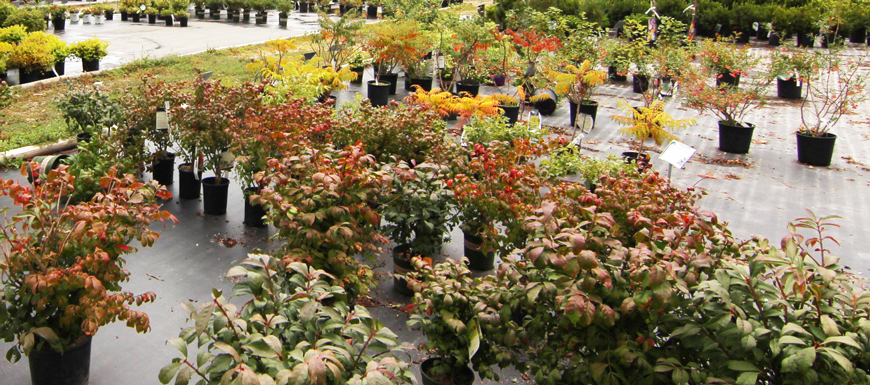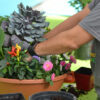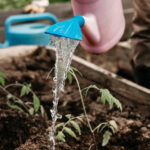Fall has repeatedly been declared as the best time to plant trees, shrubs and perennials. This is certainly true considering the warm soils which encourage root growth, and the cooling trends in temperatures allow the plants to undergo less stress. Planting in the fall in fact can be done until the ground is frozen, so that leaves plenty of time to still finish or start a landscaping project.
One of the questions we receive on planting is what are the correct steps in planting plants? Follow our foolproof instructions for successful planting!
- Call 811 to locate all utility lines that could be underground in the area you will be digging.
- Select the appropriate plant for your space. Planting a tree that will get much bigger than the space allows for, or planting a perennial that needs shade in a full sun exposure are scenarios that can doom a plant before even being planted.
- Place the plant in an appropriate spot, spacing them away from other plants or obstacles that could interfere with their growth.
- Dig the hole 2 times wider than the root ball but no deeper.
- Place the plant in the dug hole. Make sure that the root flare (where the top main root meets the trunk) is at the soil surface. Your trees should not look like telephone poles going into the ground, the trunk should have a curvature going in the s
- Loosen the roots and place them so they are growing outward instead of circling around the root ball.
- Back fill the hole by ¼ slightly packing the soil.
- Place half of the suggested Agriform tablets for the size of plant, ensuring they are not directly touching roots.
- Back fill 1/3-1/2 of hole and then place the rest of the Agrifom tablets.
- Fill the hole completely, slightly packing as the hole is being backfilled.
- Mulch around all plants that are being planted to keep the roots cool and help retain moisture.
- Water your plants in with a Root Stimulator solution appropriate for the size of plant.
After planting your plants, remember the #1 reason plants do not survive is because of improper watering. Watering either too much or too little will easily kill plants. Every planting scenario is different so we encourage homeowners to feel the soil when determining the need for watering, but on average plants should be watered every other day for the first week after planting. After the first week, water 1-2 times a week, depending on the size of the plant and the planting location. It is best to do slow, deep waterings so placing a hose on a trickle until the ground is thoroughly watered (but not saturated) is important. Water bags or buckets with holes drilled in them are also popular methods of watering. After 1 month of deep watering, you may be able to reduce to watering every 7-10 days. Monitoring of moisture levels will be a constant activity. For anyone using a lawn sprinkler system, they often do not water deep enough for roots of trees and shrubs, supplemental watering will have to be done to ensure proper moisture for the plant. Remember to keep monitoring soil moisture by feeling the soil several inches deep. Saturated soil is detrimental to plants for an extended period so dry soil out if you are overwatering.
This fall get those hands dirty and plant! Planting correctly will ensure a successful start for your plants, and by doing so in the fall, gives you a head start on important root growth next spring.



